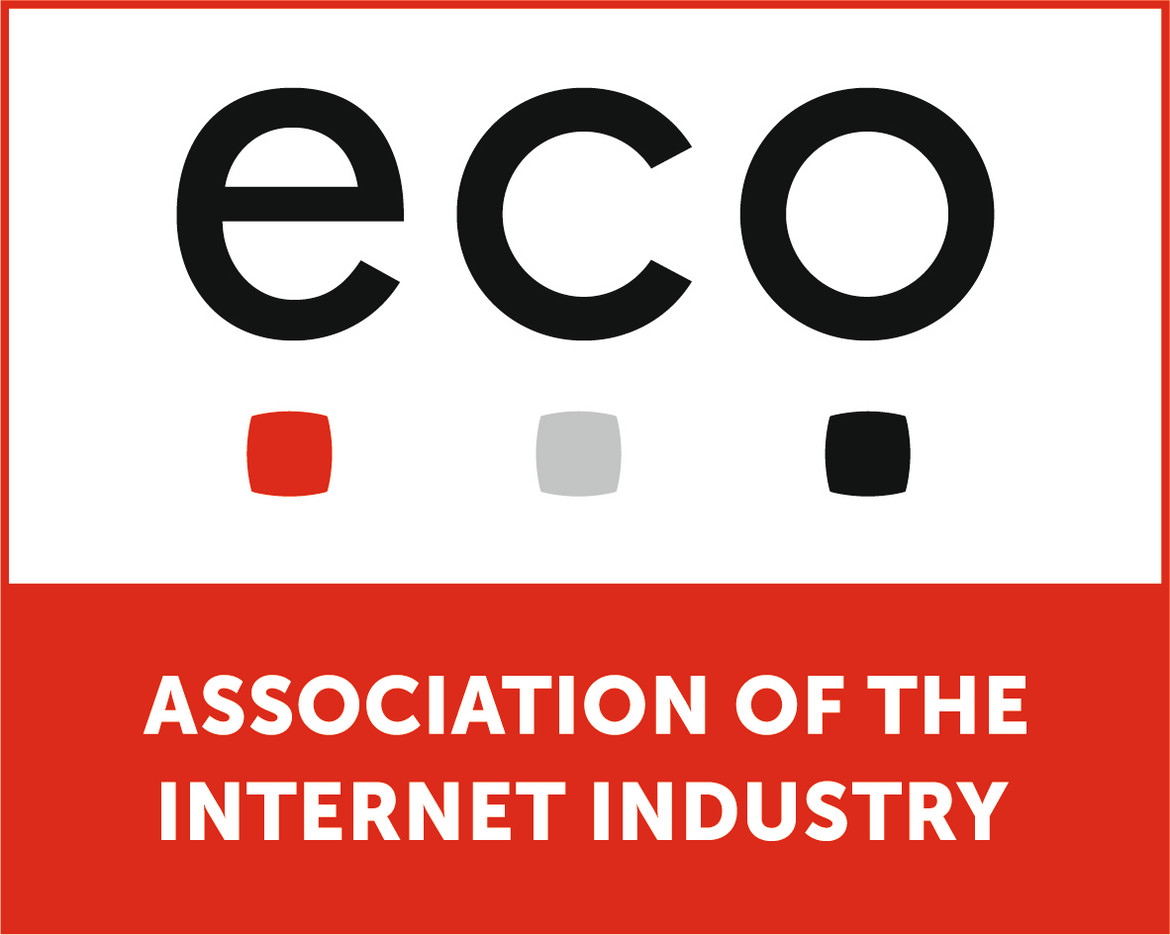Creating a Federated Blockchain as a Service Platform
Kevin Wittek from if(is) outlines the possibilities for creating a federated blockchain operated by infrastructure providers who are eco members.

© antishock | istockphoto.com
An initial workshop on the idea of an eco Association blockchain designed and run by its members will take place (in the German language) in Frankfurt am Main, Germany on 23 January 2020 (register here).
In mid-2019, in the context of an eco Association Member Workshop, I pitched the idea of creating a “eco Association blockchain.” The concept is to be worked on more fully in 2020, with a dedicated workshop planned for eco members this coming January. This article is designed to give some insight into what this project could look like.
We propose creating a federated Blockchain-as-a-Service platform that could provide the potential for faster innovations and long-term stability. Given that it is federated – meaning that it is operated by a consortium of eco members – the platform itself would be distributed by nature, which is a prerequisite for a blockchain platform. It could be made available for usage by other non-participating eco members, but potentially also by third parties.
What does blockchain offer?
Why blockchain? Blockchain basically brings a new trust architecture [1] into our world. Classical concepts of trust include such concepts as interpersonal or peer-to-peer trust, something like institutional or leviathan trust where we trust in the execution and rules of certain laws and regulations by the state and other bodies, and intermediary trust, which involves placing trust in an intermediary, like a bank, for example, to perform our business.
With blockchain or blockchain networks, there is now a distributed trust architecture where, on the one hand, we place trust in the technology; in the system. But, at the same time, it only works – at least, in the case of federated blockchain networks – if we as humans, as users, also trust the federation that is operating the network. Therefore, this is a real human-trust relationship factor one has to keep in mind. If we can develop a federated blockchain network with many well-known, trustworthy companies – with entities from Europe – then this could also be a competitive advantage over individual offerings from one single large provider, and is also a factor to enable smaller providers to position themselves against the larger, more international, and more US-based offerings.
Possible design of the eco Association blockchain – business case and economic models
In terms of monetization strategies for the “eco Association blockchain,” there are a range of possibilities. Firstly, the service can be made available to both eco members and external customers, but there could be special conditions in place for eco members to make it more attractive for them to participate. And we could think about it conceptually as a layered approach. For example, on the infrastructure level, we would have a blockchain platform operated by the eco member companies mostly focused on infrastructure offerings. But it doesn't mean that the actual usage of the platform is limited to Blockchain-as-a-Service, because it could potentially include value-added services on top: by, for example, deploying dApps (decentralized applications based on smart contracts), which could enable a Software-as-a-Service offering for other use cases.
So the platform could be sold as a blockchain-based Software-as-a-Service, but the user of the service does not necessarily even need to be aware of the fact that it is blockchain-based. It can, though, leverage the underlying blockchain infrastructure for the trust properties that a federated blockchain can bring to this use case.
Subscription or token-based
There are two different economic models we could apply for this “eco Association blockchain” concept. One would be similar to classic cloud platform usage. Just as we use certain cloud products and then simply pay a monthly or annual subscription fee, this infrastructure could also be made available on a subscription basis. This is in line with classical economic systems that are well understood. However, if we wanted to go one step further, it would be possible to consider applying concepts of a token economy to the system, meaning potentially using crypto-currency tokens to pay for the service.
There is a concrete example from another federated blockchain that we at if(is) – Institute for Internet Security – are a partner of: a research blockchain called Bloxsberg which is run worldwide by universities and nonprofit research institutions. The infrastructure is basically free to use. You can always get a certain number of the tokens, which are called “Bergs”. It is always possible to request a certain number of free Bergs, but it's a manual process meant just for small use cases. However, once you participate in this network with your own node – which we at if(is) do – you automatically earn many more Bergs for ensuring that the network can operate, and for the mining of the blocks. And this means that just by participating in the provision of this public infrastructure, you earn currency to perform your own tasks. So the token economy model would be attractive for infrastructure providers who are also interested in using the blockchain themselves.
Governance in a federated blockchain
The thing is, we can roughly understand the economic system dynamics of the classic system. In contrast, token economic systems are not yet very well explored or understood. This means that we would not know in advance how the dynamics could play out, and what could happen in the long-term. For example, whether certain providers would perhaps start to put more nodes onto the network, and in this way create a kind of gravitational effect where they suddenly amass all the currency in the system, and then they could just use the blockchain for their purposes. Those kind of things are more complex to anticipate. I’m not saying that it would not work, but simply that we would not know how it would play out in practice. And we would just need to invest a lot more time into deciding how to create this market. But this is something we plan to discuss next year when we start with the workshops to concretely develop this idea further.
Another decision which would impact the way the project takes shape is which consensus algorithm or which federation concept we would use on a technical level to implement the network. Let's assume we use something like a Proof of Authority consensus algorithm. Proof of Authority is one of the blockchain consensus algorithms, similar to Proof of Work. Proof of work is mostly known from Bitcoin and Ethereum, which is a highly energy-intensive method of reaching consensus. Proof of Authority, on the other hand, is quite inexpensive and works by having a manual onboarding process for the nodes for mining or the validator nodes that you are trusting. It would then be quite straight-forward – on an organizational and governance level – to stipulate that every participating entity would only be allowed to enroll one validator node at first.
Seeking small and medium-sized data center operators to join the eco Association blockchain federation
So, what kinds of infrastructure providers might this concept be interesting for? Well, the good thing about this concept is that we don't need one single large provider, but we can and should involve smaller, independent operators as part of the federated concept. Small to medium-sized data centers would be ideal participants. For one of our other research projects, we are working on a similar Blockchain-as-a-Service concept focused on e-Government services for smaller cities that is to be run by small municipal or regional data centers. The infrastructure providers would be able to use the blockchain for their own purposes, but also contribute to offering a node, i.e. offering the infrastructure. This is another model that could potentially be adopted. The other option would be to have something like a counter-offering to large-scale cloud services, but which is more blockchain-focused. With this federated nature, it may have the potential to compete with larger global players.
The blockchain hype is over – now we can get down to work
As of 2019, we can definitely say that when it comes to blockchain, the hype is over, and we have arrived in a lackluster phase now where some people have lost interest. On the other hand, what we continue to see is that blockchain adoption can be a catalyst for new digitalization projects. This doesn't mean that blockchain technology is necessarily required to implement this digital transformation; it simply acts as a catalyst. This is something we've witnessed in several research projects that we are involved in. Therefore, perhaps it makes sense to leverage blockchain in order to achieve a better rate of digitalization.
On the other hand, I think blockchain will play out its strengths in the long-term in business-to-business communication, integration, and automation. Once we have different organizations communicating with each other, using this decentralized architecture really makes sense. It makes sense from the standpoint of trust architecture, and sometimes it also makes sense from a standpoint of straightforward resilience and better availability on a purely technical level. So, the hype is over, it is now time for us to see in practice what the benefits of blockchain really can be – for both the users and for the operators of the infrastructure.
References
- Gaggioli A, Eskandari S, Cipresso P and Lozza E (2019) The Middleman Is Dead, Long Live the Middleman: The “Trust Factor” and the Psycho-Social Implications of Blockchain. Front. Blockchain 2:20. doi: 10.3389/fbloc.2019.00020
After many years working in the industry as an engineer, Kevin is now doing his PhD at the RWTH Aachen on the topic of smart contract verification. In addition he is leading a research team in the field of blockchain and DLT technology at the Institute for Internet Security at the Westphalian University of Applied Sciences in Gelsenkirchen.
Please note: The opinions expressed in Industry Insights published by dotmagazine are the author’s own and do not reflect the view of the publisher, eco – Association of the Internet Industry.





